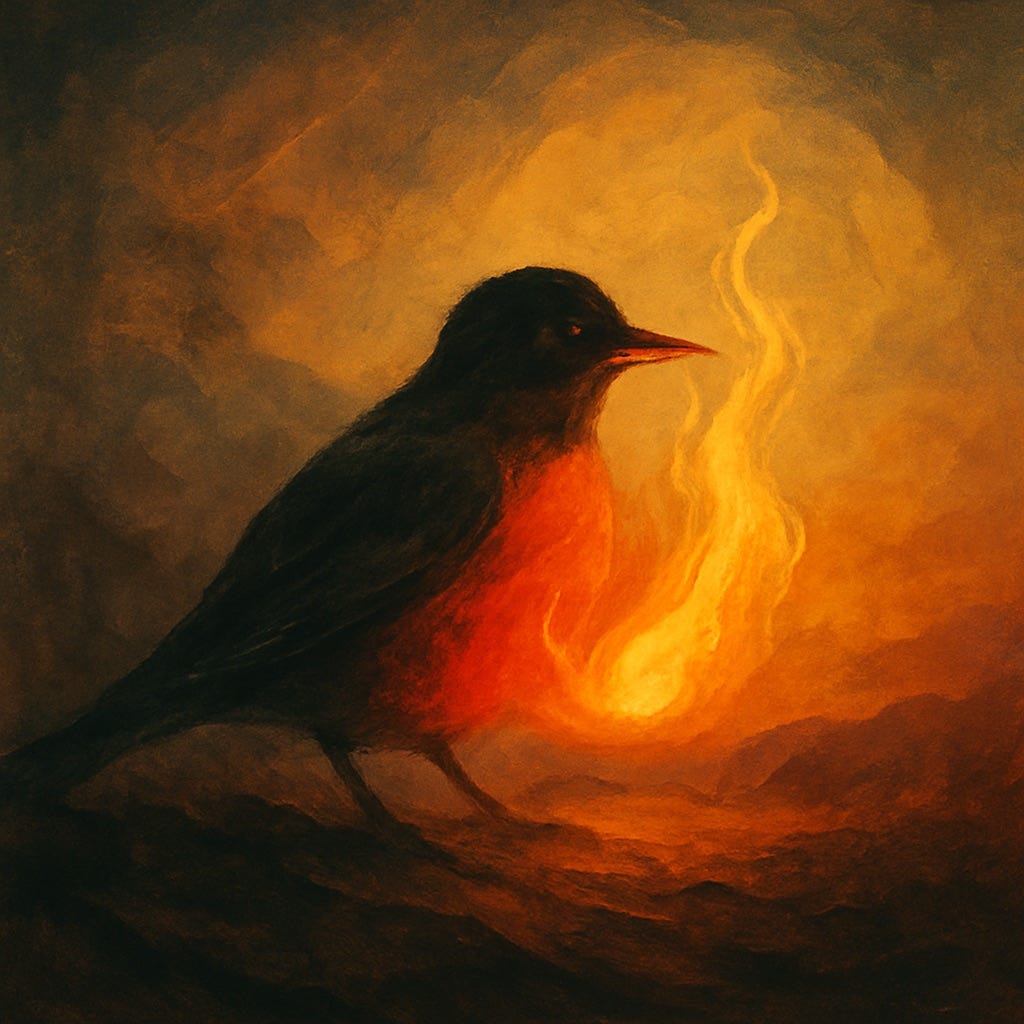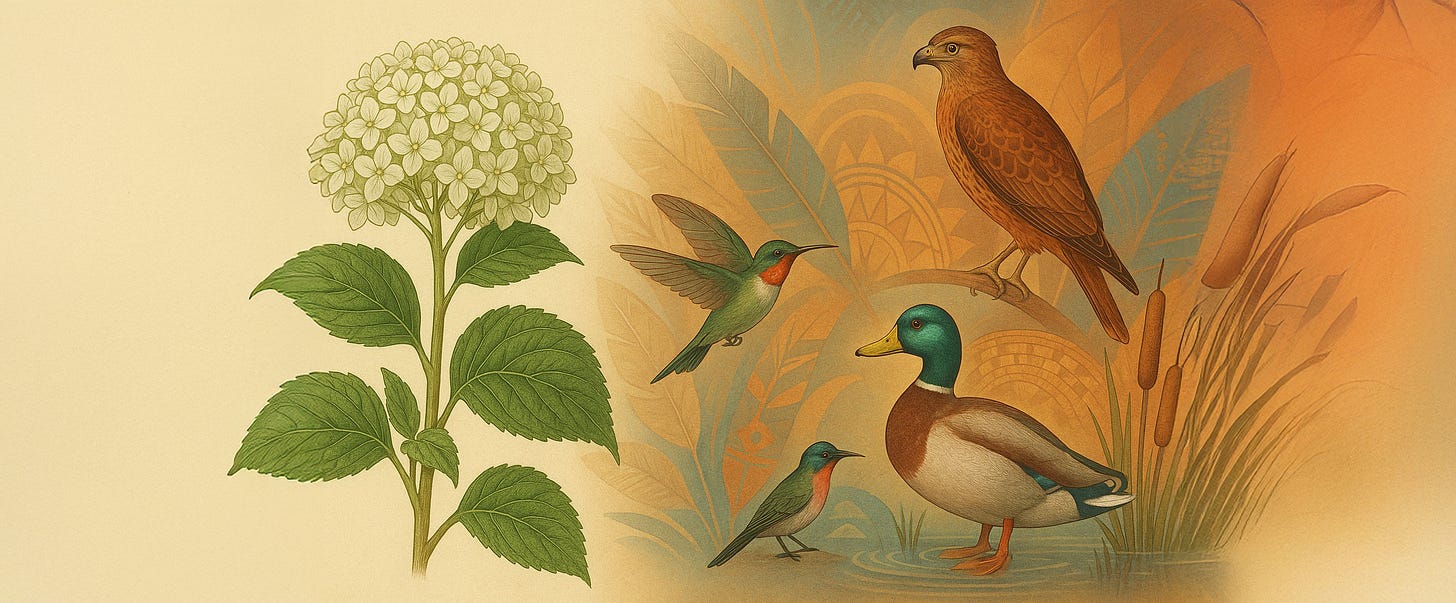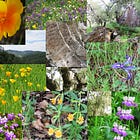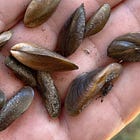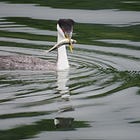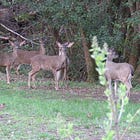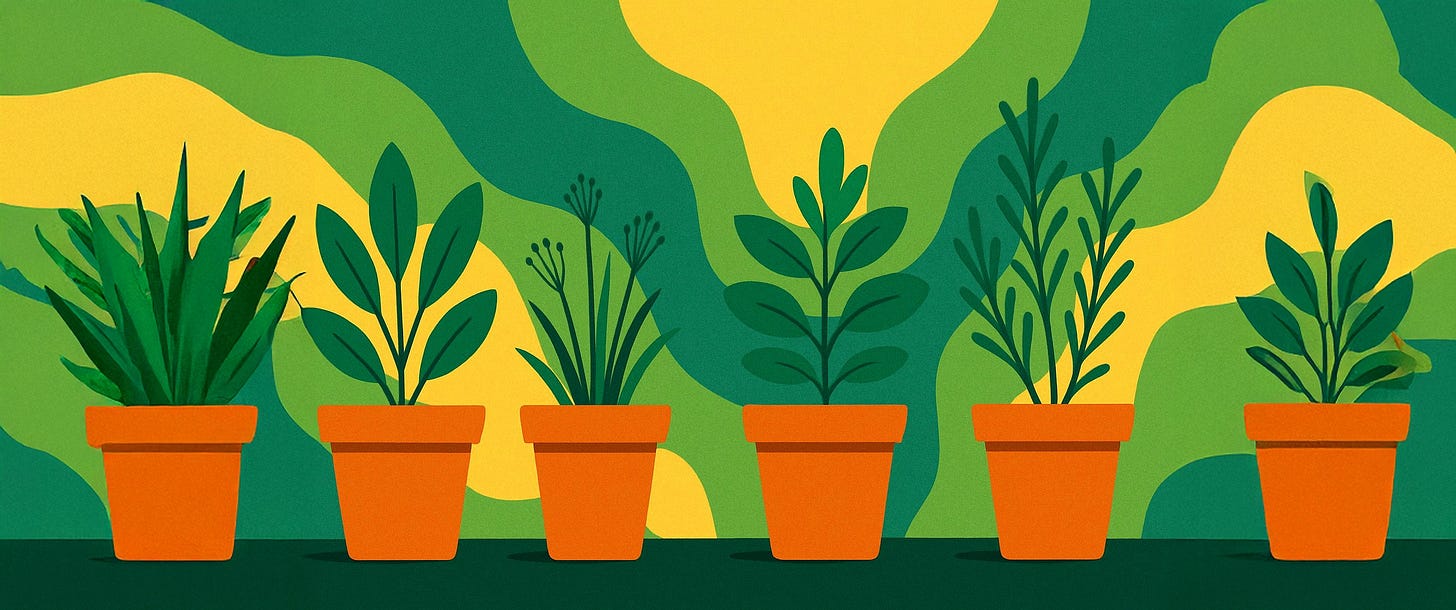Green Wednesday: Hydrangea Care Tips / Cultural Legacy of Napa’s Birds
By Cindy Watter, UC Master Gardener of Napa County / Kathleen Scavone, Environmental Contributor
Green Wednesday: Gardening and Ecological Insights
Every Wednesday Napa Valley Features brings you Green Wednesday, featuring articles from environmental voices and the UC Master Gardeners of Napa County. These contributors share research-based horticultural advice and insights on sustainability and climate topics relevant to our region.
Summary of Today’s Stories
"Pruning Hydrangeas Keeps Them Happy and Healthy" by Cindy Watter, UC Master Gardener of Napa County: A humorous and informative reflection on oakleaf hydrangea care, emphasizing proper pruning timing and propagation tips for thriving blooms in Napa’s climate.
"The flowers grow on old wood, so that’s why I have lots of them this year." — Cindy Watter
"Birds in Napa's Native Culture" by Kathleen Scavone, Environmental Contributor: A richly detailed exploration of how Indigenous communities in Napa have honored birds through myth, ceremony and craft, emphasizing the enduring cultural and ecological significance of local avian species.
"Feathers were prayed for and treated with respect as you would a person." — Kathleen Scavone
Birds in Napa's Native Culture
By Kathleen Scavone
NAPA VALLEY, Calif. — Birds abound in the Napa Valley. The species that call this place home or migrate through number in the hundreds. We view them pecking at our backyard feeders, swooping across the grasslands to nab a nutritious insect or see them standing in a Zenlike posture in order to spear a lake fish. Writer and naturalist Diane Ackerman said, "How sense-luscious the world is!" But owls, ducks, herons, woodpeckers and other birds have been much more than eye-candy for thousands of years.

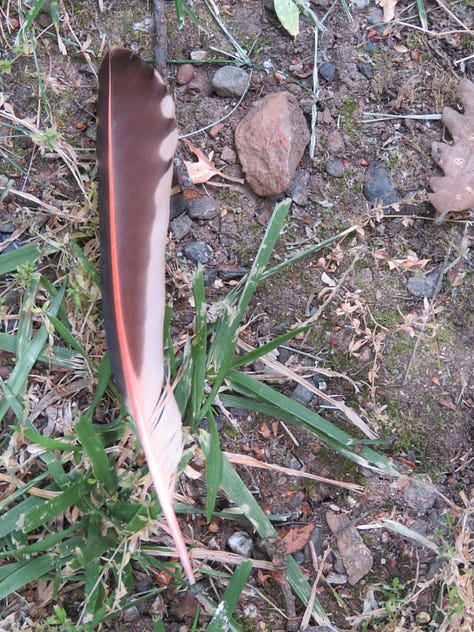


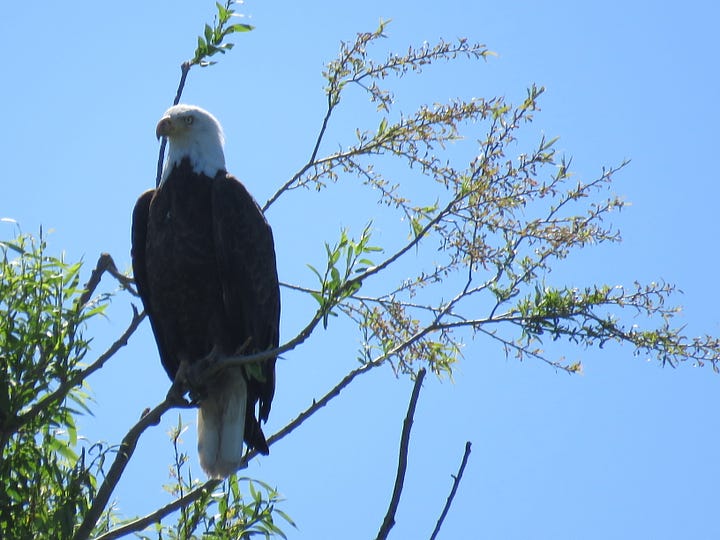
Napa Valley Historical Society documents and displays explain that the Indigenous people who populated what is now the Napa Valley included Miwok, Patwin, Wappo and also Pomo, since evidence of Pomo people was discovered during the making of the Napa Valley Vine Trail. Much in the way of myth, basket-making and ceremony involved birds of Napa Valley both past and present.
Mark Stephenson, the Napa Solano Audubon Society president for more than five years, recently hosted a spectacular presentation for the organization. Stephenson, who leads bird outings and talks that are found on the NSAS website, began birding in elementary school and learned from the best with Arthur Allen, founder of Cornell’s Laboratory of Ornithology and other experts from the lab. On March 22, a NSAS talk called Important Roles Birds Played in Native American Cultures with Charlie Toledo was given and recorded on YouTube.
Toledo, the presentation's speaker, is executive director of the Suscol Intertribal Council, which works on preserving Native American culture through their community-based 501(c)(3) organization. The council has created countywide classes and events to bring the community closer and connects California Native people by mentoring through various organizations, corporations and foundations. The Suscol Intertribal Council has owned property in the Pope Valley where they can perform their ceremonies and gather in order to keep traditions alive since 1998. They also partner with Napa County Resource Conservation District to boost land stewardship.
Toledo has made vast strides to lead and inform on the issue of human rights for Indigenous people locally, statewide and internationally and is a Towa descendent, native to New Mexico. Her myriad interests include speaking and presenting, and she has worked in alternative healthcare and mediation. She also practices organic gardening.
The area called Napa Valley today is, according to the Suscol Intertribal Council website, “One of the oldest continuously inhabited areas in North America." They elaborate that the meaning of Suscol is derived from a Patwin village site. In Patwin language Suscol translates to “wet and green” to portray the marshlands situated south of Napa. The council commenced in the 1970s in order to stop the desecration of sacred lands. Since then, statewide protocols have been established for working on archaeological sites and the handling of Indigenous remains and belongings.
Toledo explained to Audubon viewers that bird feathers are used by all Indigenous cultures in medicine, art and ceremony. Traditionally, uses of feathers have and still do include those used in a tribe's traditional regalia. She elaborated on many Napa bird species in her talk.
Hummingbirds are considered a good sign in Native cultures and are important throughout the Americas. The hummingbird is known as the messenger, and Napa's hummingbirds migrate to Central America or Mexico. Some consider the hummingbird as sacred since it is thought to be a bird of transformation and travels so far.
Turkey feathers have been used across time for Pomo dance ceremonies. Turkey feathers are used in their regalia, skirts and headdresses. Pomo people consume turkey meat, as well.
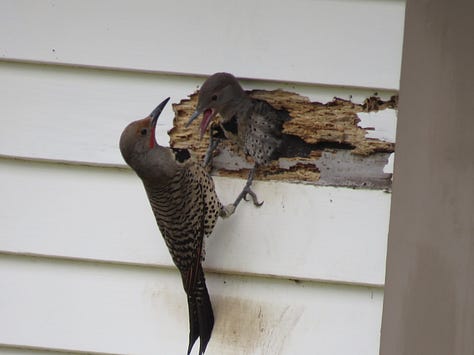
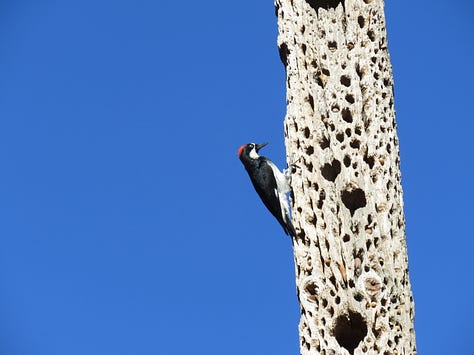
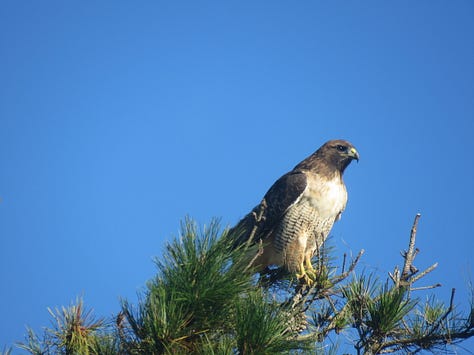
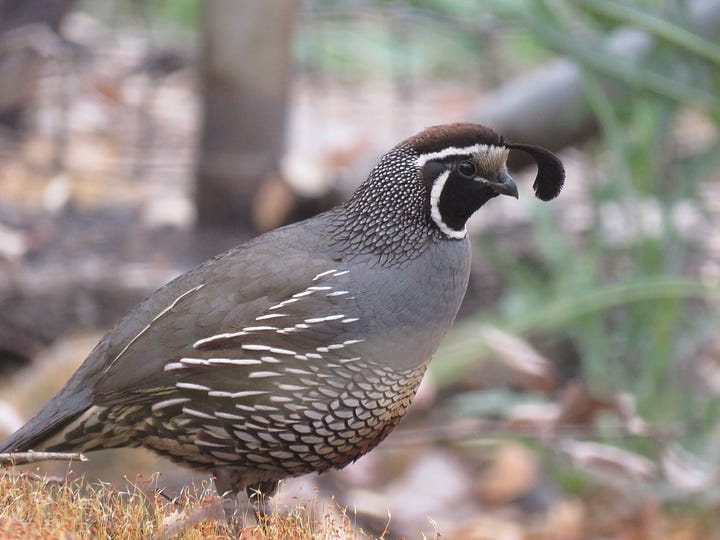
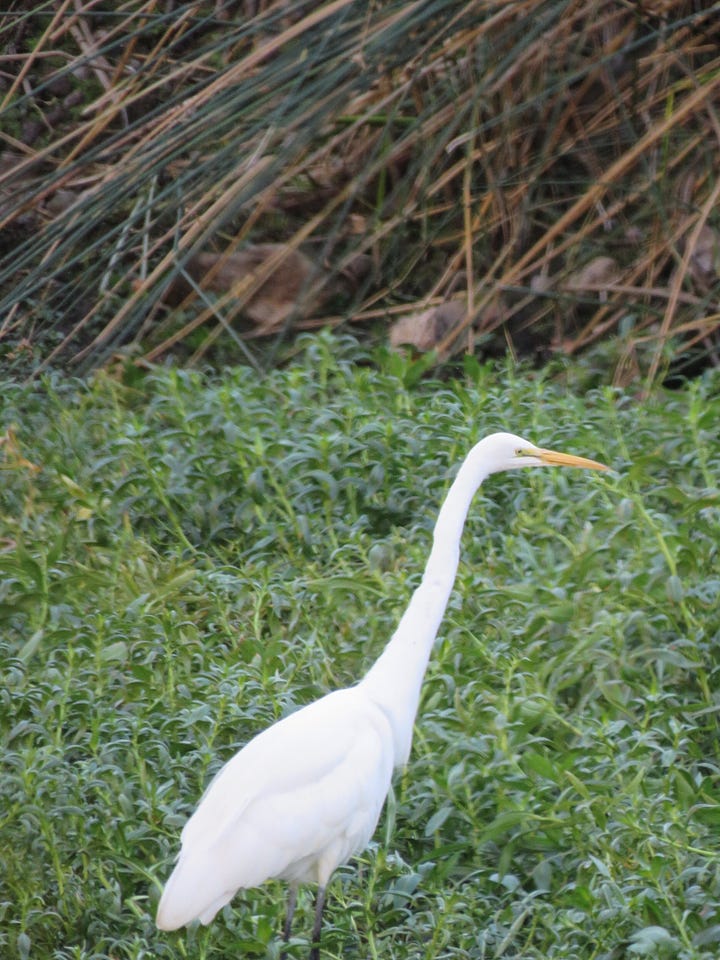
Bald eagle feathers are not used by California Indians, as Toledo explained, but are used for various ceremonies by out-of-state tribes. Eagles found near Carneros and Lake Hennessey are enjoyed for their beauty in nature.
Flicker feathers were traditionally used in the making of Pomo face gear, which is worn during special dances and ceremonies. Since the feathers of this beautiful bird are hard to come by today, Indigenous people often substitute orange popsicle sticks instead of the orange feathers.
Red-tail hawk feathers were utilized traditionally for regalia, headgear, skirts and the feather dance. Feather fans were used to draw down energy for the people. Birds today are not hunted, Toledo underscored, but found as road kill. Today some Indigenous people buy feathers of other species, and the feathers may be colored since hunting birds for feathers is not done anymore. Traditionally, the particular way the feathers were worn communicated what the dancer cared to convey. Feathers and regalia can last for generations when cared for. The feathers were prayed for and treated with respect as you would a person.
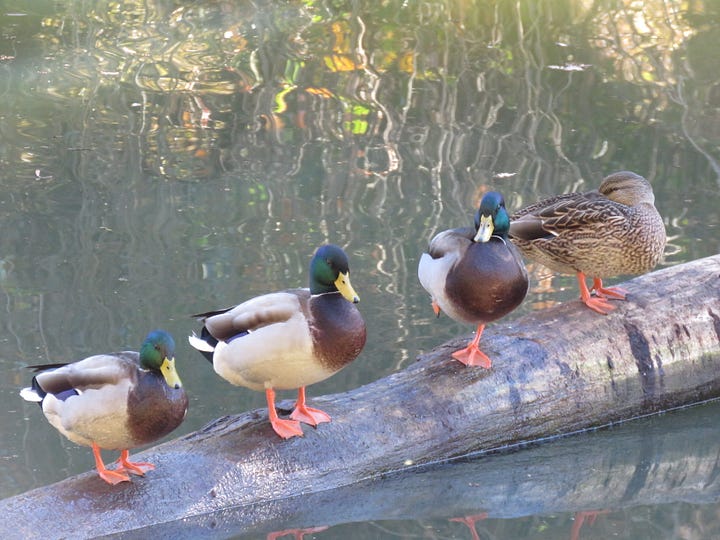
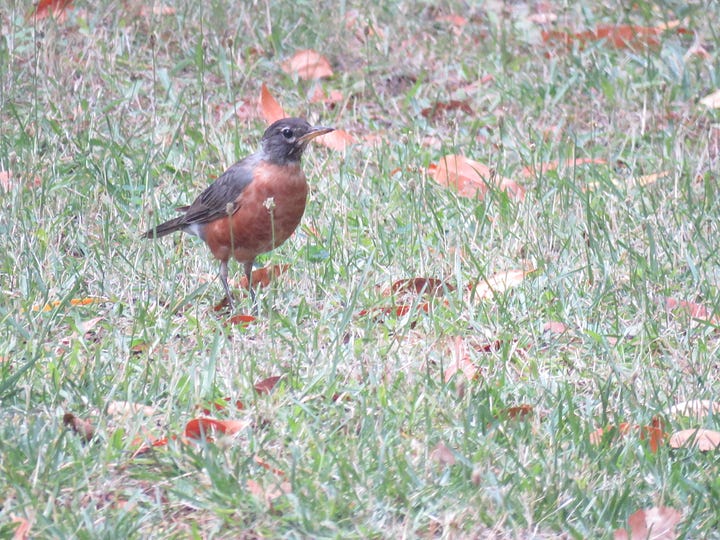

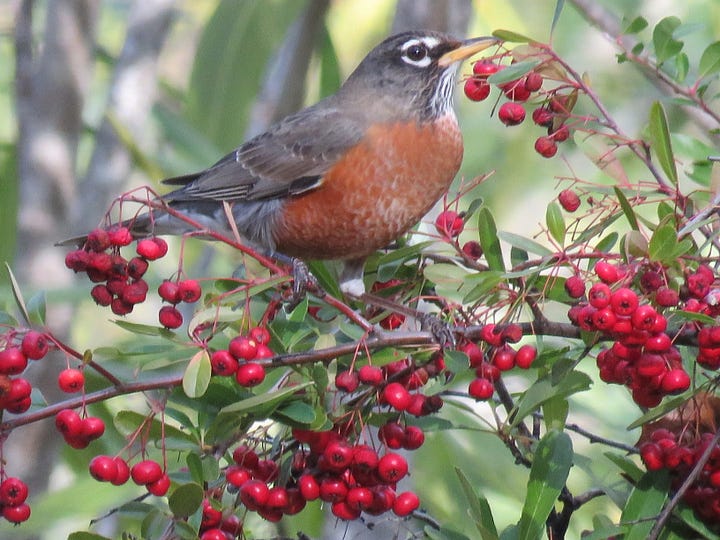
Besides fans, skirts, headdresses and other ceremonial wear, many styles of baskets were woven for ceremonies that incorporated various bird feathers. The lifestyle of Indigenous people called for the use of many basket containers and implements. For example, baskets were woven into tools for collecting and beating seeds, fish traps, bird traps for quail and woodpecker, and basket hoppers for setting over a mortar to collect acorn flour. Some Pomo baskets were so watertight that they were used to cook acorn mush. There were woven cradles, baskets for storing, mats and more.
Mallard duck feathers were woven into some baskets. Certain baskets had Bullock's oriole or meadowlark feathers woven into them, while others used red-headed woodpecker feathers meticulously woven into the white willow, sedge, bullrush, redbud or other basket weaving materials.
Throughout her talk on birds, Toledo also presented other historical information on local and other Indigenous tribes. Sadly, Napa Valley and other Native people were not allowed to pray legally or perform their religious ceremonies in the past. It wasn't until 1992 that Indigenous people began to legally pray when they held their special ceremonies at the confluence of the Napa River and Napa Creek.
She said that John the Baptist Church on Napa Street was constructed over a sacred Native religious site. She articulated some terminology and told viewers that the word “tribes” denotes language groups, while the word “clans” defines a more immediate group, such as sisters and brothers. Toledo told viewers that Indigenous people never stopped their ceremonies, but it was necessary for them to practice secretly with their feathered regalia and other accoutrements.
Ethnobiology studies have presented the oral traditions, stories and myths of many Indigenous peoples over time that can be found in books such as S. A. Barrett's “Pomo Myths.” Ethnobiology, according to Merriam-Webster, is “the interdisciplinary study of how human cultures interact with and use their native plants and animals.” Many myths, such as origin myths, incorporated birds into the stories. The stories passed down by elders over time were spoken and often changed in the telling. Studies done on mythology in the fields of linguistics and anthropology have determined the value of the stories, even if they become altered a bit. Traditions of the past carry on, thankfully gaining in value since so many Indigenous practices and stories were outlawed in the past.
How the Robin Got His Red Breast
Adaptation of a Miwok myth
Once, when the world was dark, people didn’t know where to get fire to light up their world and keep it warm. A bird knew where to go to get fire, but it was a long, long ways off. He was determined to get it, though, so he made the long and difficult journey. When he finally got to where fire was located, he carefully held it and began the journey back to his people so that they could have light and warmth. Since it was such a long journey, he had to protect the fire from going out, so during each night of the journey he covered it with his breast to keep it hot for the people.
Before long, his breast turned red from his efforts. But he finally arrived home once again and gave the fire to the people who had been patiently waiting a long time for the warmth to arrive. He was such a generous bird that he didn’t stop at giving the fire to the people. Before he gave it away, he thought of saving some of the fire for others. So he put fire in the buckeye tree and taught the people that in order to get the fire out of the tree, you rub buckeye sticks together. Robin’s next great achievement was to make the sun. Now everyone could be warm and have light every day.
The people of the past held an intimate knowledge of the land, including the avian species, which plants were for food or medicine, where to fish and more. Toledo emphasized that contrary to once-popular belief, Native people were not lazy savages as popularly portrayed but highly skilled storytellers, hunters, basket-makers and artists.
Who would have thought that birds held — and still hold today — the unique role of identity and community as honored traditions are kept alive. Brokenness and beauty intermingle through nature's intricate interchange and inspire patient observation and learning.
Kathleen Scavone, M.A., retired educator, is a potter, freelance writer and author of “Anderson Marsh State Historic Park: A Walking History, Prehistory, Flora and Fauna Tour of a California State Park,” "People of the Water" and “Native Americans of Lake County.” She loves hiking, travel, photography and creating her single panel cartoon, “Rupert.”
Pruning Hydrangeas Keeps Them Happy and Healthy
By Cindy Watter, UC Master Gardener of Napa County
NAPA VALLEY, Calif. — When I was 8 years old, my grandmother came for an extended visit, bringing boxes of children’s books that she and my mother had enjoyed. Always an avid reader, I snatched one. Titled “Slovenly Betsy,” it sent me to the dictionary. Then I settled down to read a series of hair-raising tales about little children whose eyes fell out because they cried all the time, whose legs broke off because they played too roughly, who played with matches and set themselves on fire and who refused to bathe and were ostracized.
One child ate too much and disgusted her playmates, and another stole her sister’s new party dress and immediately turned bright yellow to match it. These edifying stories were accompanied with full color drawings. I was horrified and hid it in a closet. I found it many years later and wondered what sadist had given that to my grandmother and why on earth she had given it to me.
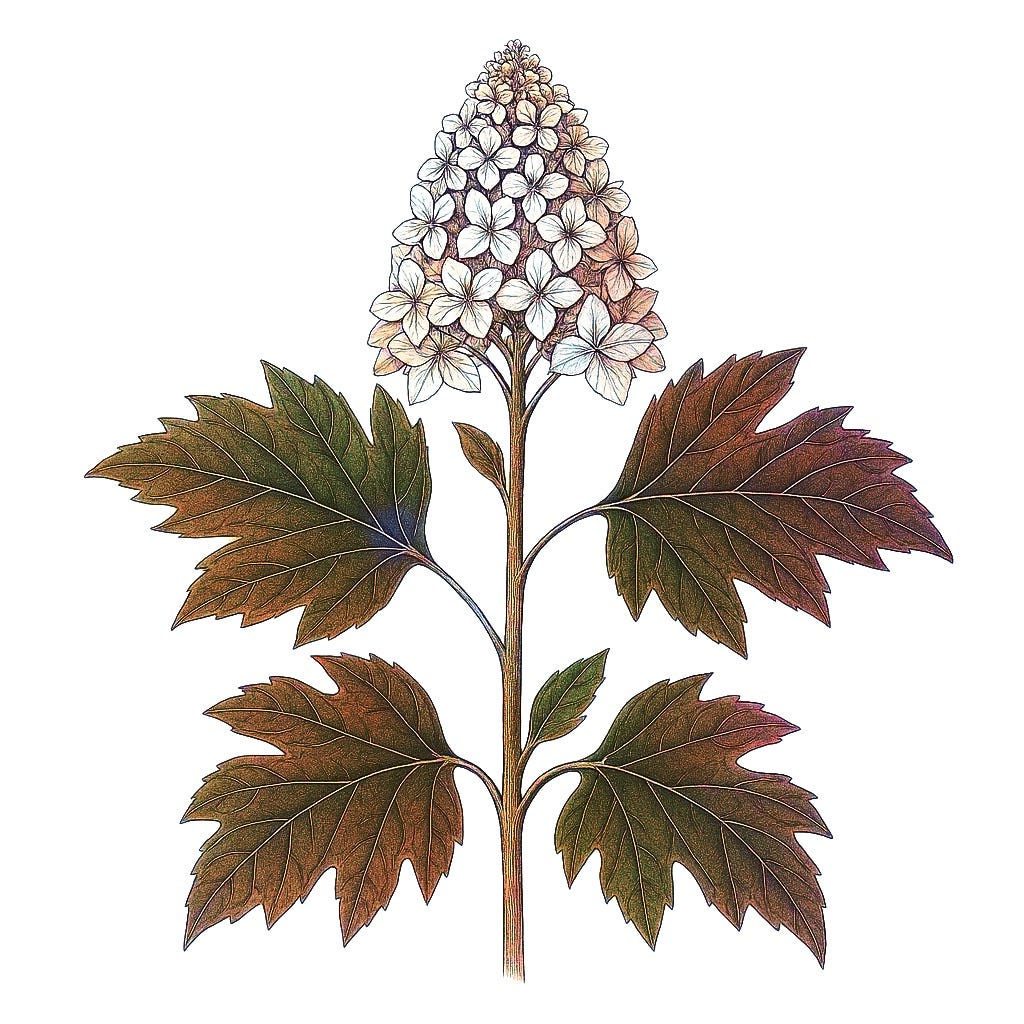
Well, it wasn’t a total loss. I expanded my vocabulary—gory, envious and glutton are useful words—and perhaps I will be inspired to write a cautionary guide to horticulture. I could call it “Indolent Cindy: The Master Gardener Who Did Not Prune Her Hydrangea.” (I didn’t prune my lilacs either.)
It’s true: I did not prune my oakleaf hydrangea (Hydrangea quercifolia) last summer. Was I punished for this lapse? Not at all. The shrub is more like a tree this season and covered with creamy white panicles, which is the term for hydrangea flowers.
The hydrangea variety in my front yard is called Alice, and it is indeed splendid with its cone-shaped panicles and dramatic, deeply lobed leaves. The blooms last for two months, after which the hydrangea should be pruned.
If you wait too long to prune them, you risk cutting off the tiny buds for the following year. They appear in the summer, soon after the flowers fade and turn pale brown. You should prune the shrub immediately after the flowers die back.
Always wear gloves when pruning, because the plant juice is a skin irritant. If you see dead, weak or diseased-looking branches, you can remove them any time of the year.
The flowers grow on old wood, so that’s why I have lots of them this year. I also mulched around the roots, which kept them cool and moist in hot weather, and amended the soil with compost. I even used the leaves (which turn a beautiful dark red in winter) for mulch when they fell off. So, Alice wasn’t neglected, and I will prune her this summer. Really.
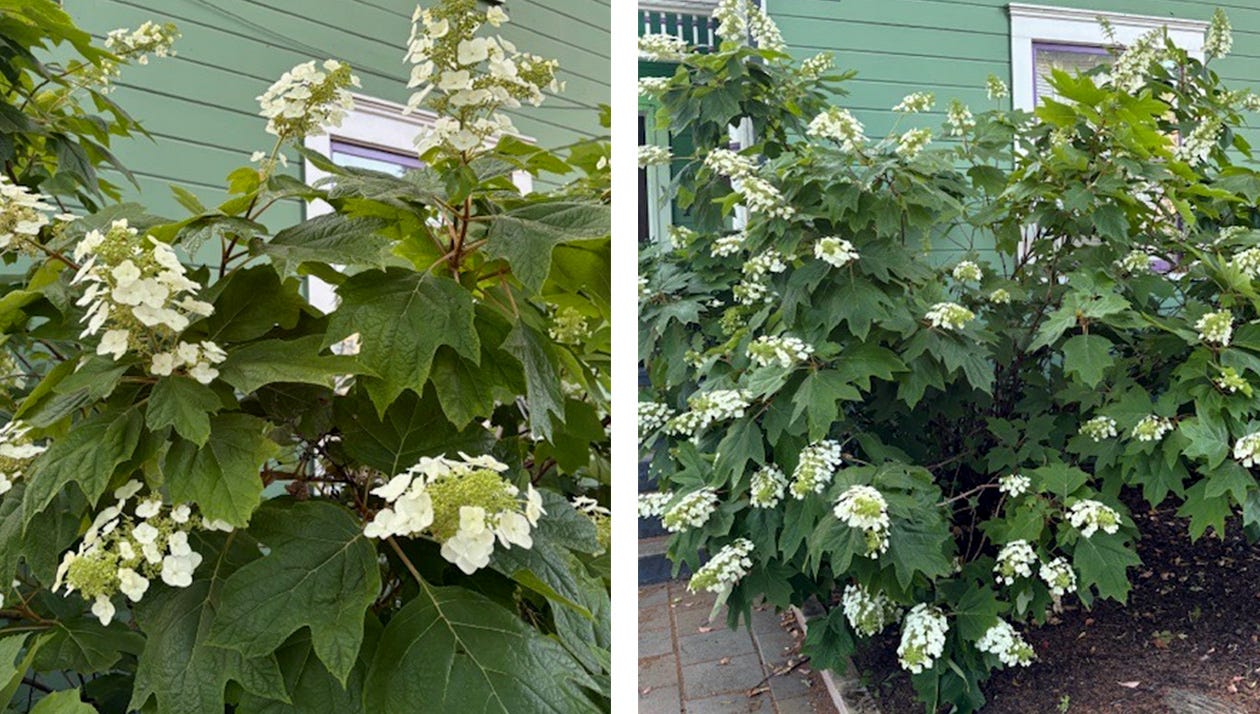
Oakleaf hydrangeas are native to the southeastern U.S., so they can tolerate heat. They don’t need much water once established, making them ideal for Napa Valley’s Mediterranean climate. However, you should water them if it gets hot in summer as they are used to summer rain.
Hydrangeas attract pollinators, especially bees. Oakleaf hydrangeas aren’t vulnerable to many pests—the occasional aphid or spider mite can be rinsed off with water—but deer do like them.
I planted mine before I knew the leaves are toxic to cats, dogs and humans. However, the “UC Master Gardener Handbook” says there is no record of a dog or cat being poisoned. It’s hard to see what would attract pets to hydrangeas, but you never can tell with people, especially children. Symptoms are limited to nausea, but that can cause dehydration, which is dangerous for elderly and young people.
The oakleaf hydrangea is not invasive. If you would like to propagate your plant, stem cuttings are the best way, and you will get an exact clone of your hydrangea. Seeds are less reliable and will not produce a true copy of the mother plant.
To propagate, take clean, sharp pruning shears and clip some stem tips that don’t have flowers. You want plant energy to go into developing roots, not flowers. Make sure each cutting has at least one growth node—the bulging line across the stem.
Snip away the leaves from the lower half of the cuttings. Dip the ends of the cuttings in a rooting hormone and place them in a small pot filled with moist, sterile potting mix. Put the potted cuttings in plastic bags. Keep them away from direct sunlight and keep the soil damp but not soggy. After about three months you can transfer the plant to a larger pot or directly into the garden.
One gardener told me that her oakleaf hydrangea didn’t bloom this year. That happened to me when I waited too long to prune it and accidentally cut off the buds. You should prune to take off the panicles, but don’t touch the leaves below them. That’s where the buds appear. Or perhaps the shrub didn’t get enough sun, or too much. The oakleaf hydrangea prefers dappled light. A fertilizer with too much nitrogen can encourage foliage growth but not flower growth. Use a low- nitrogen fertilizer instead, or worm compost.
Hydrangea quercifolia is a dramatically attractive shrub year round. In the spring it has large blue-green leaves, and the cone-shaped blooms in the summer are spectacular. The leaves turn a gorgeous purplish burgundy in the fall, and in winter the stems are bronze colored. While not care-free, it is easy care and with some attention should live for decades.
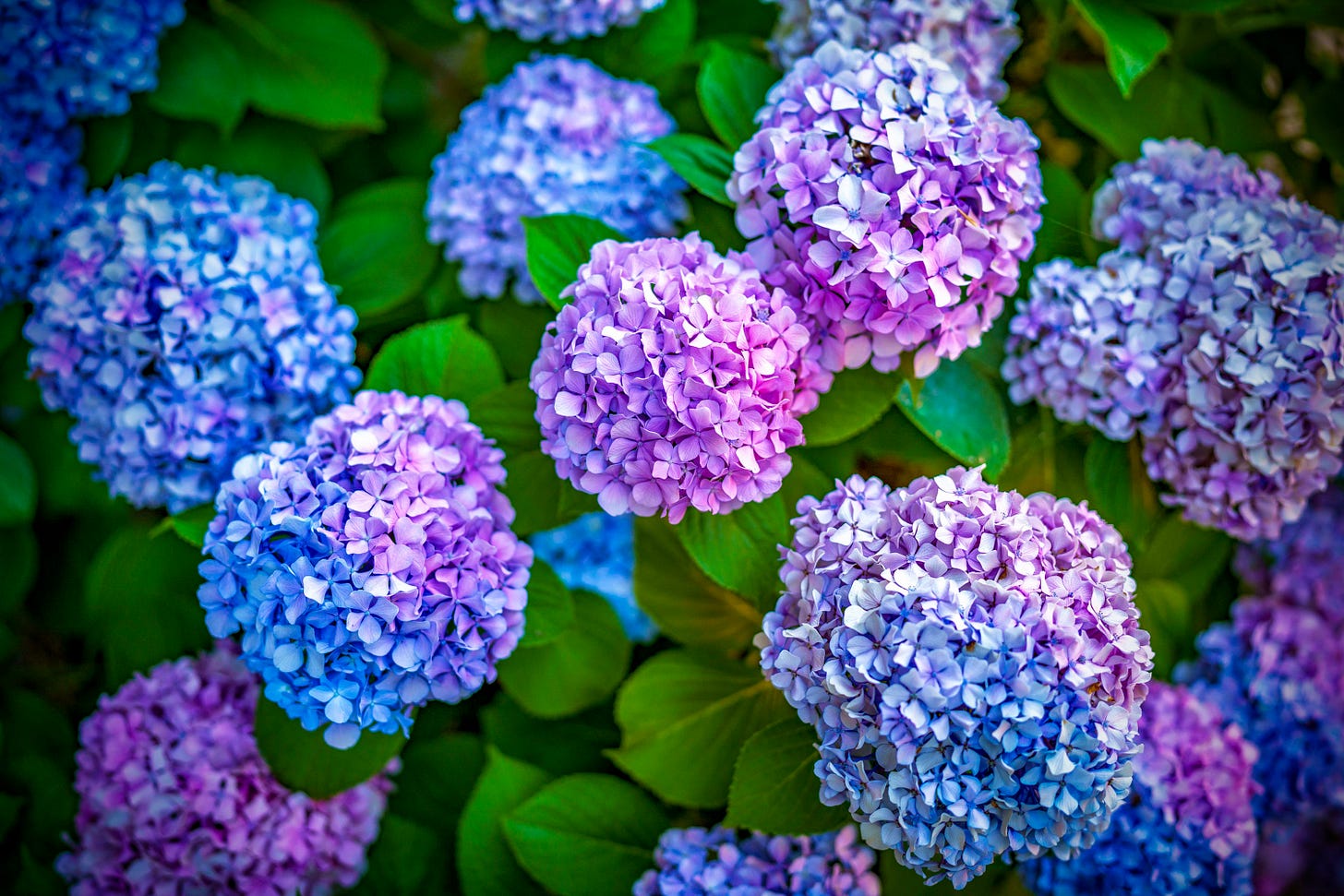
Events
Workshop: Join UC Master Gardeners of Napa County for a workshop on “Growing a World of Flavorful Herbs” on Saturday, June 7, from 10 a.o 11:30 a.m., at UC Cooperative Extension, 1710 Soscol Avenue, Napa. Many culinary herbs are easy to grow, have few pests and take up little space. Workshop includes hands-on activities. Register here.
Tree Walk: UC Master Gardeners of Napa County will lead a tree walk through Napa’s Fuller Park on Sunday, June 8, from 10 a.m. to 11:30 p.m. Fuller Park contains many exotic and native trees that have been planted over the last 120 years. Tour begins at the corner of Oak and Jefferson Streets in Napa. The walk is free but space is limited and registration is required.
Workshop: Join UC Master Gardeners of Napa County for a workshop on “Summer Rose Care” on Saturday, June 14, from 10 a.m. to 11:30 a.m., via Zoom. The UC Master Gardener Rose Team will provide research-based answers on how and why to prune your roses, what to do about disease and pesky bugs, when to fertilize and many more summer rose-care issues. Attendees may then join a hands-on workshop at Fuller Park Rose Garden in Napa on June 21 to practice what they’ve learned. Register to receive the Zoom link.
Library Talk: UC Master Gardeners of Napa County with Napa Public Library will host a free talk on “A Wonderland of Aloes” on Thursday, July 3, from 7 p.m. to 8 p.m. via Zoom. L how to repair, upgrade or plan new irrigation for your lawn and garden. Note that the meeting will not allow entry after 7:15 p.m. Register to receive the Zoom link.
Help Desk: The Master Gardener Help Desk is available to answer your garden questions on Mondays and Fridays from 10 a.m. until 1 p.m. at the University of California Cooperative Extension Office, 1710 Soscol Avenue, Suite 4, Napa. Or send your questions to mastergardeners@countyofnapa.org. Include your name, address, phone number and a brief description of the problem.
—
Cindy Watter is a UC Master Gardener of Napa County.





